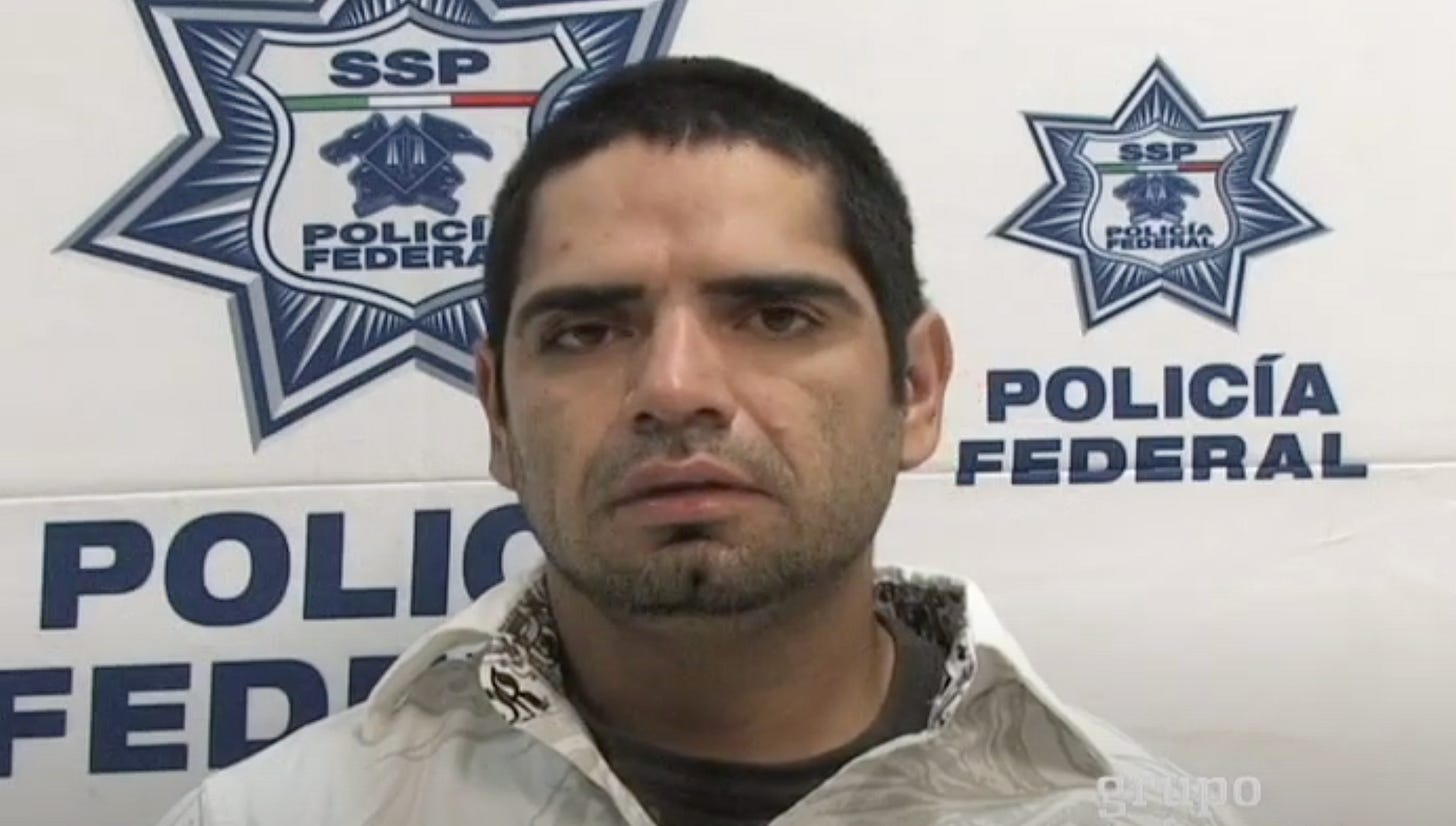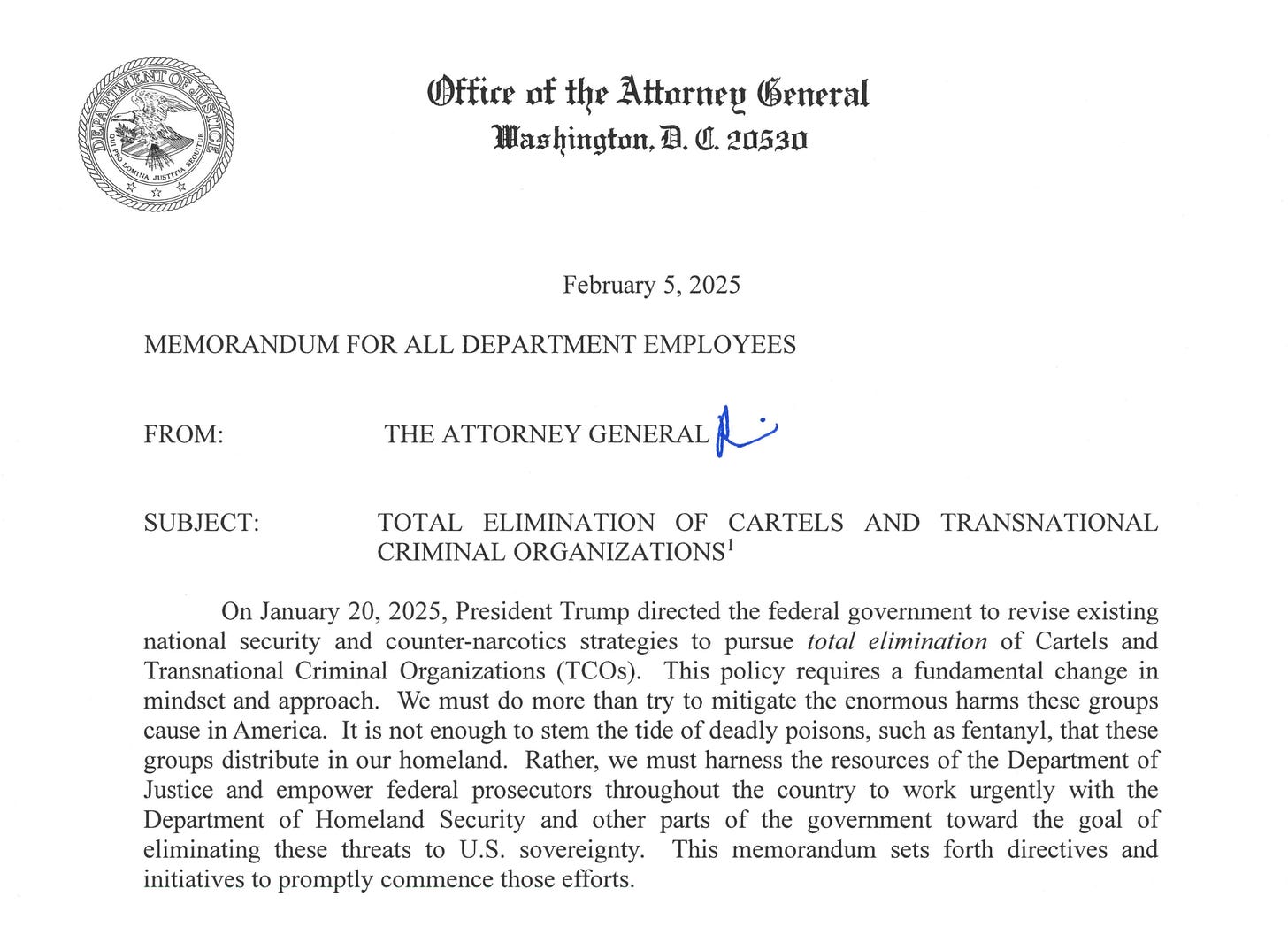How Do Mexican Cartels Function?
Paramilitary organized crime networks have become an explosive cross-border issue. But what exactly are they?
Para leer en español click aquí.
When “El Diego,” the feared head of a paramilitary wing of the Juarez Cartel, took the stand as a witness in a court in El Paso, Texas, in 2020, he revealed that he was almost blind. Diego, or rather José Antonio Acosta Hernández, then 41, had to walk right up to the face of the accused, a Juarez Cartel underboss called El Pariente, to identify him.
A U.S. marshal who escorted the witness to the courtroom told me the blindness was caused by Mexican federal police torturing Diego so badly. In his testimony, Diego indeed described the cops beating him brutally in the head and eyes but he also said he had a condition called keratoconus.
The federal police had been so furious with Diego because he had used a car bomb against them in 2010. In the Texas court, Diego confirmed he was behind that attack but said it was because the federales conspired with his rivals. “Ninety percent of the federal police force worked for the Sinaloa Cartel, that's why we set up the car,” he said.
Diego also confessed to being one of the most prolific-ever cartel murderers and in a plea agreement he said he was involved in a stunning 1,500 homicides. On the stand though, he clarified this was the number of murders by his entire paramilitary wing. Yet he admitted there were many innocent victims including high-school kids and U.S. consular officials.
Diego described how he was a corrupt state police officer before joining the cartel full-time. He detailed sub-groups in the mob including cóndores (condors) made up of rotten cops, halcónes (hawks), who are street look-outs, and linces (lynxes) a group of ex-soldiers who protect the bosses. He said they had three radio channels: “One was for Ciudad Juárez. One was to be able to communicate to the capital of the state of Chihuahua. And one was for young men who were secretaries,” he said.
The El Paso trial of El Pariente got almost no media coverage, with the court sealing documents, the pandemic hitting, and a decline of local media. Yet it’s one of a series of narco trials in the United States over the last two decades in which dozens of senior cartel figures have testified, giving insight into Mexican organized crime networks and how they operate.
Understanding the nature of cartels is crucial now that President Donald Trump has signed an executive order to designate them as foreign terrorist organizations and there is a real possibility of U.S. military action. The Attorney General’s Office under Pam Bondi on Wednesday issued a memorandum calling (rather ambitiously) for the “total elimination of cartels and transnational criminal organizations.” It’s urgent we have a clearer notion of what these groups are, how they function, and what their motives are.
Gangster testimony in court must of course be taken with caution, and I write about the problems of America’s narco snitch system here. But we also now have many journalistic interviews with cartel operatives - including various on CrashOut like the one I did here with the “Chicago cocaine twin.” And we have a ton of physical evidence including mob phone recordings, and testimonies of people in contact with cartels, whether agents pursuing them, singers they hire, or business owners they shake down. Cartels are complex organizations, but they are not as mysterious as they were two decades ago.
In this piece, I look at the nature and scope of cartels in three sections: how they run their business, how their power structure functions, and how they operate as a paramilitary force. I’ll get into the trickier questions of their affiliates and switching alliances and their corrupt relationship with soldiers and politicians. (The fact that cartels work with rotten elements of the state is a core part of what they are, and it’s been acknowledged by almost everyone writing on the subject for years).
There is a debate about whether we should use the word cartel at all. I go through that in a piece here and so won’t regurgitate those arguments. But in short, I believe “cartel” is an imperfect word for a very real phenomenon of networks of paramilitary organized crime. If you prefer another word or acronym that is fine, but as cartel is the most common and less unwieldy term, I’ll use that. However, if you don’t believe there is a real issue with powerful organized crime in Mexico then I have a disagreement with you; I think the hundreds of thousands of deaths and disappearances, the painful extortion and kidnapping, the mass production of lethal synthetic drugs, are among the overwhelming evidence. A failure to confront this for decades has led to the crisis we now face.
For-Profit Organizations
There are varied definitions of…
Sorry folks, you need to subscribe to read the rest of the story. But it’s only the price of a cuppa coffee and you get the full archive including exclusive interviews with cartel operatives and maps of cartel territory. And now is a great time to subscribe as I will be following these issues with detailed reports you can trust as big things break in the coming months.




